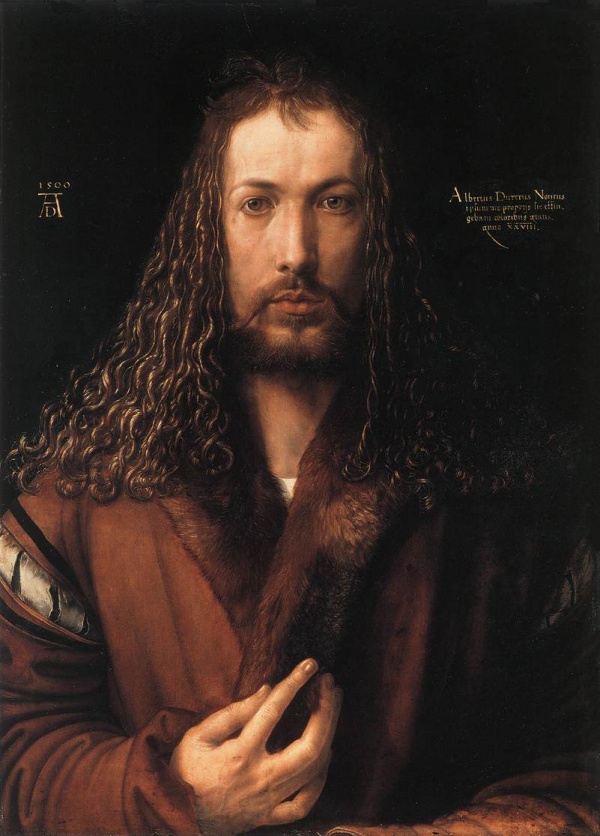Facts About Self-Portrait
"Self-Portrait" by Albrecht Dürer, painted in 1500, stands out as one of his most intimate and intricate self-portraits. This panel painting recalls earlier depictions of Christ, characterized by a symmetrical composition, dark tones, and Dürer's direct gaze and hand gesture. His face possesses a mask-like quality, concealing his inner emotions, while inscriptions on either side of him float against a black background, enhancing the painting's symbolic depth.
Although the composition is rigidly symmetrical, there are subtle asymmetries present. Dürer's frontal pose was quite unconventional for secular portraits of the time, indicating a transition from youth to maturity. The prominently displayed year, 1500, marks a significant moment in both Dürer's life and the turn of the millennium. The painting may have been created as part of a celebration with Renaissance humanist Conrad Celtes.
The self-portrait's iconography, with its exaggerated symmetry and Christ-like features, suggests Dürer's aspiration to emulate Christ. A Latin inscription acknowledges his age and artistic talents. The painting closely adheres to the conventions of late medieval religious art and has even influenced later depictions of Christ.
Originally, the portrait likely belonged to the Nuremberg city council before being sold to the Bavarian royal collection. Today, it resides in the Alte Pinakothek in Munich. Dürer was known for his self-portraits and for incorporating himself into his paintings, with around twelve surviving self-portrait images. This particular painting captures Dürer at a mature stage in his life, highlighting his artistic skill and self-awareness.

 Switzerland
Switzerland